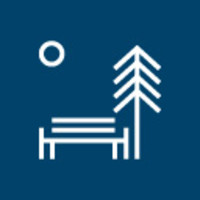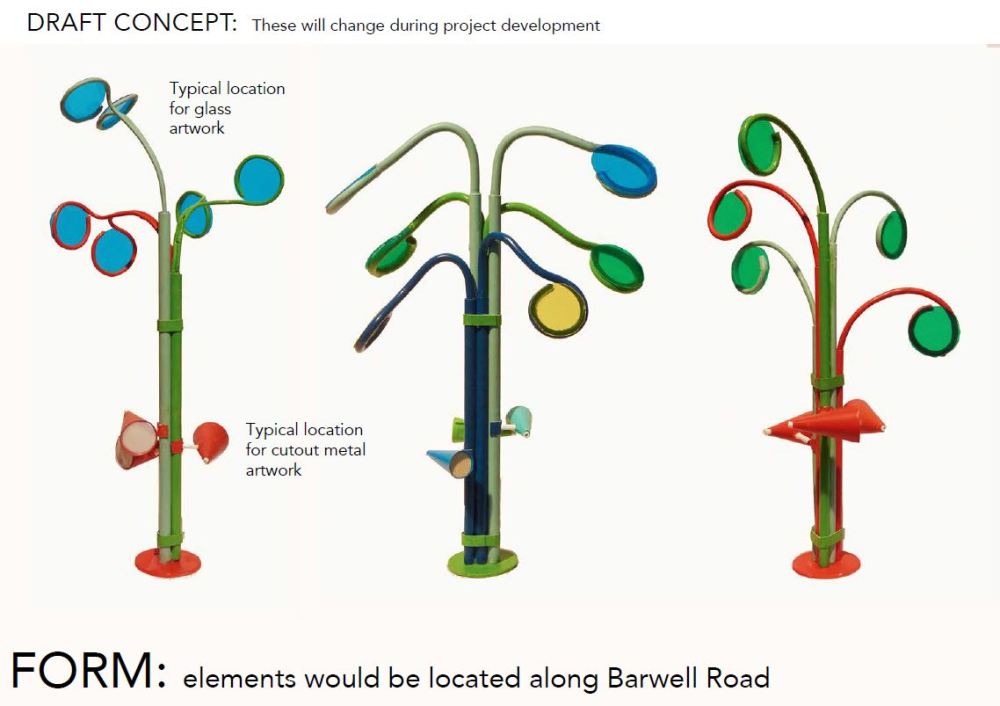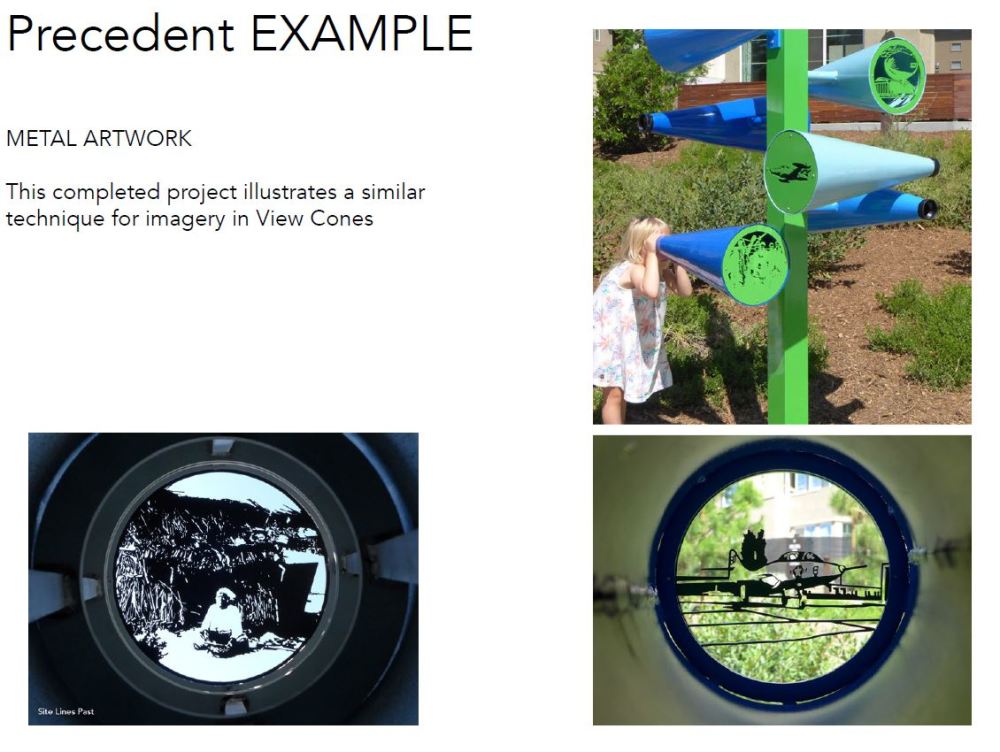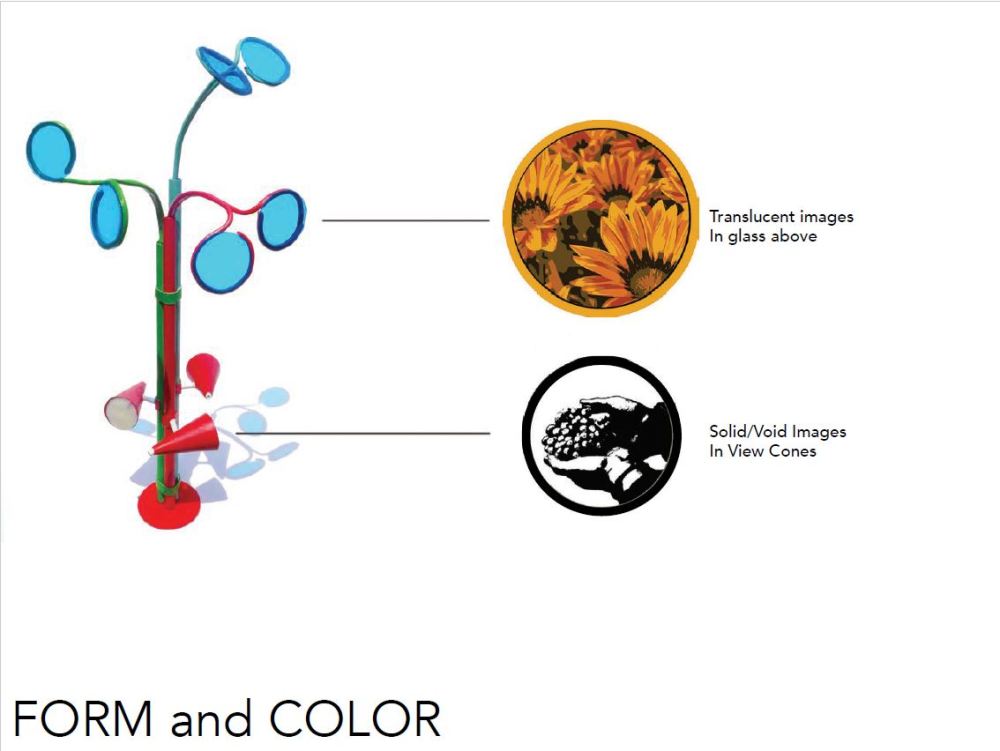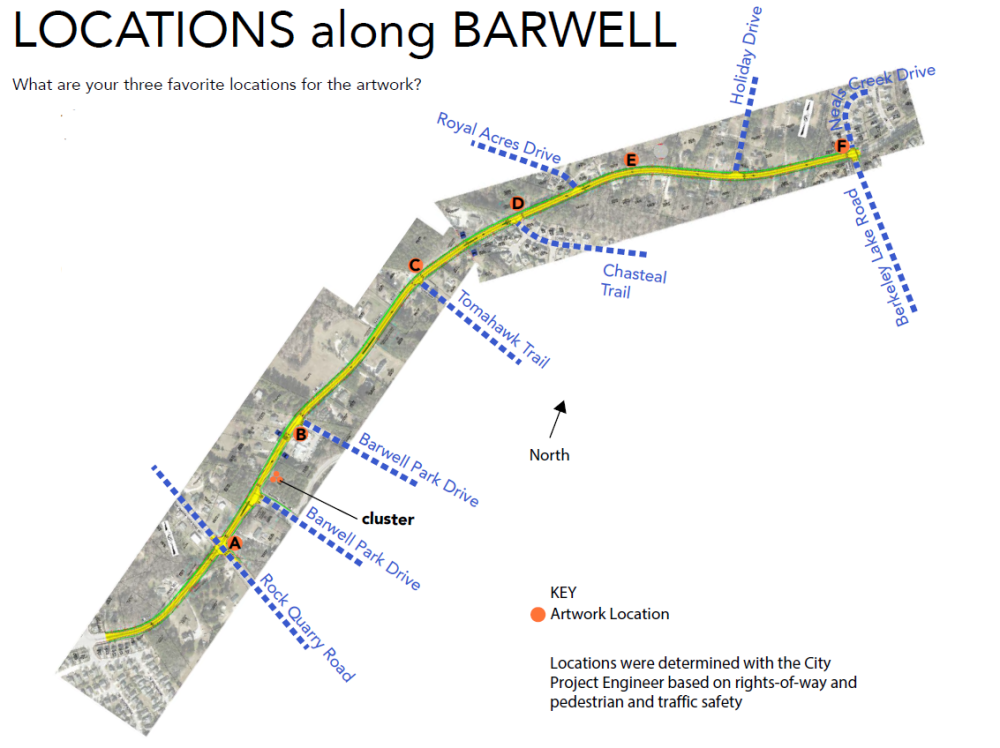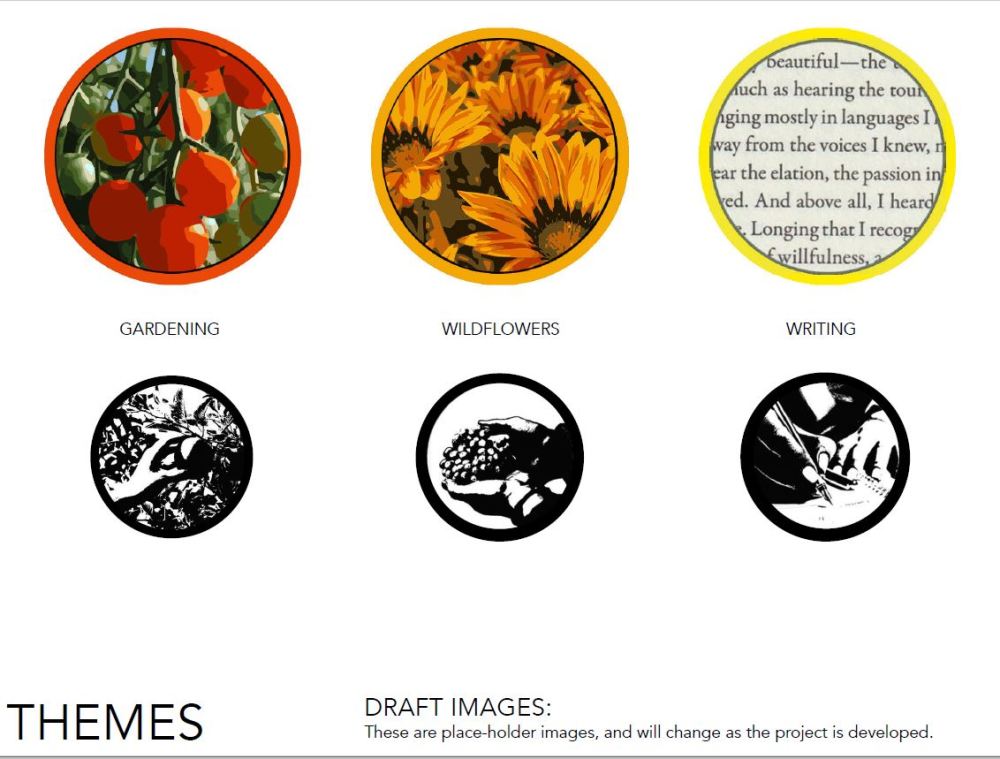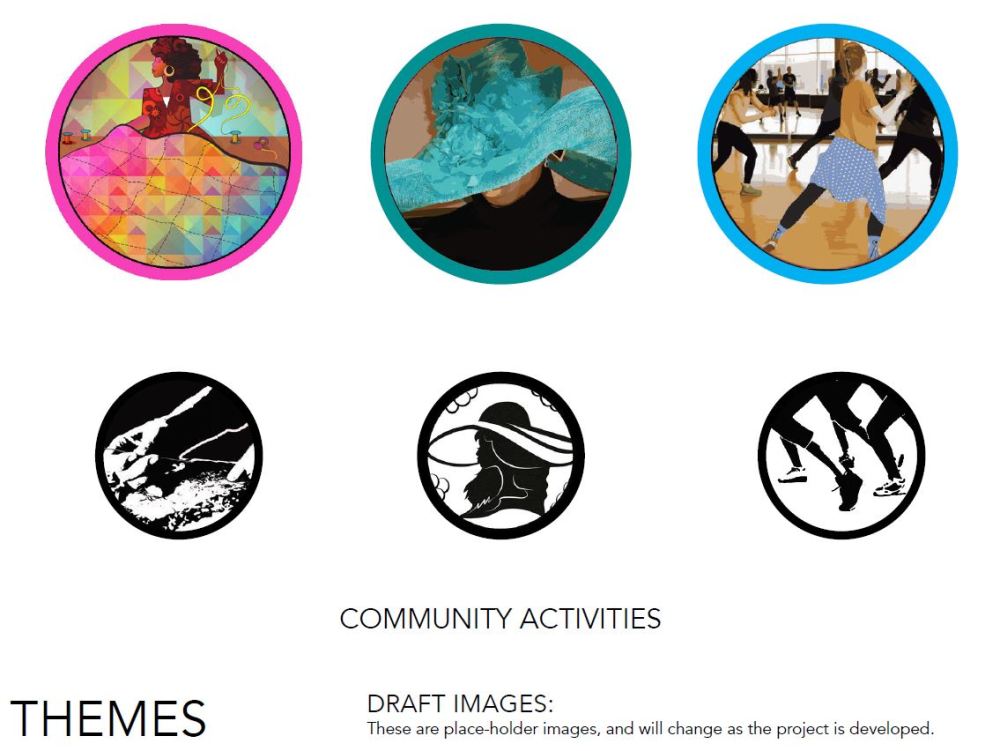Barwell Road Public Art - Concept Design
Barwell Road Public Art - Concept Design
ARTWORK FOR BARWELL ROAD
Public Art for Barwell Road seeks to express the vibrancy of the community through a series of artworks located along the stretch of the Road, and at the Barwell Park area. These artworks are meant to be colorful, floral-like forms that engage motorists and pedestrians along the new multi-modal path.
Themes are expressed through imagery located within ”View Cones” and overhead artglass vignettes.
WE SEEK YOUR INPUT AS WE DEVELOP THIS ARTWORK.
About the Artists
Lead Artist:
UrbanRock Design is an award-winning art and design studio of Jeanine Centuori, FAIA, and Russell Rock. They work between art and design—this interdisciplinary focus enables them to easily interface with arts and construction professionals. UrbanRock Design works in an integrated manner, by creating concepts, images, and production documents.
Learn more about UrbanRock Design
Professional Development Artist:
UrbanRock Jermaine “JP” Powell is a North Carolina based mixed-media artist and muralist. Originally from Cleveland, Ohio, JP holds a Bachelor of Fine Arts from Pratt Institute, located in Brooklyn, New York. His paintings and public art projects explore the complexities of human relationships, materialism, and consumerism.
About the Streetscape Project
The Barwell Road Public Art Project is funded by the 2017 Transportation Bond. Capital Improvement Projects that meet the Percent for Art Ordinance standards, such as this one, are eligible to use 1% of construction funding for Public Art. Inclusion of aesthetics and artwork is an investment in our communities, with a focus on community identity and equity in quality of life. Communities gain cultural, social, and economic value through public art.
The project will add turn lanes, sidewalks, and bike lanes on Barwell Road. The corridor includes residential homes and a well-loved public space consisting of the Barwell Road Elementary School, the City of Raleigh Firestation, and Barwell Community Center complex.
The public art could be stand-alone or integrated into the site. Potential opportunities include a stand-alone sculpture, artwork sited at the community complex, and/or artwork integrated into pedestrian paving, lighting, benches/bike racks, or other site elements. The artist will work closely with the design team, project stakeholders, and residents.
This project is part of the Percent for Art program and is a part of the Barwell Road Improvement Project.
Proposed themes include:
Gardening
Wildflowers
Writing
Community Cultural Activities
Thank you for your input!
Your comments are important and will help the public artists understand what residents value and want to see along Barwell Road.
If you have questions about the project, or would like a project team member to meet with you or a group you represent, please contact Public Art Director Kelly McChesney at (919) 996-5657 or Kelly.McChesney@Raleighnc.gov
Visit the project websites at https://raleighnc.gov/SupportPages/public-art-active-projects for more information.
About Raleigh Public Art
Mission: To create and integrate diverse artworks into Raleigh's landscape in order to establish a vibrant visual environment that provides public places with civic distinction, as well as fostering meaningful connections between people and place.
History: In 2009, the City of Raleigh adopted ordinances creating the Percent Art Program. The program allocates 1% of funds from capital construction projects for public art. Public art associated with City of Raleigh construction projects is managed by the Raleigh Arts Office. More information about Raleigh Arts can be found at https://raleighnc.gov/raleigh-arts
The Blue Ridge Road Public Art Project is funded by the 2017 Transportation Bond. Capital Improvement Projects that meet the Percent for Art Ordinance standards, such as this one, are eligible to use 1% of construction funding for Public Art. Inclusion of aesthetics and artwork is an investment in our communities, with a focus toward community identity and equity in quality of life. Communities gain cultural, social, and economic value through public art.
